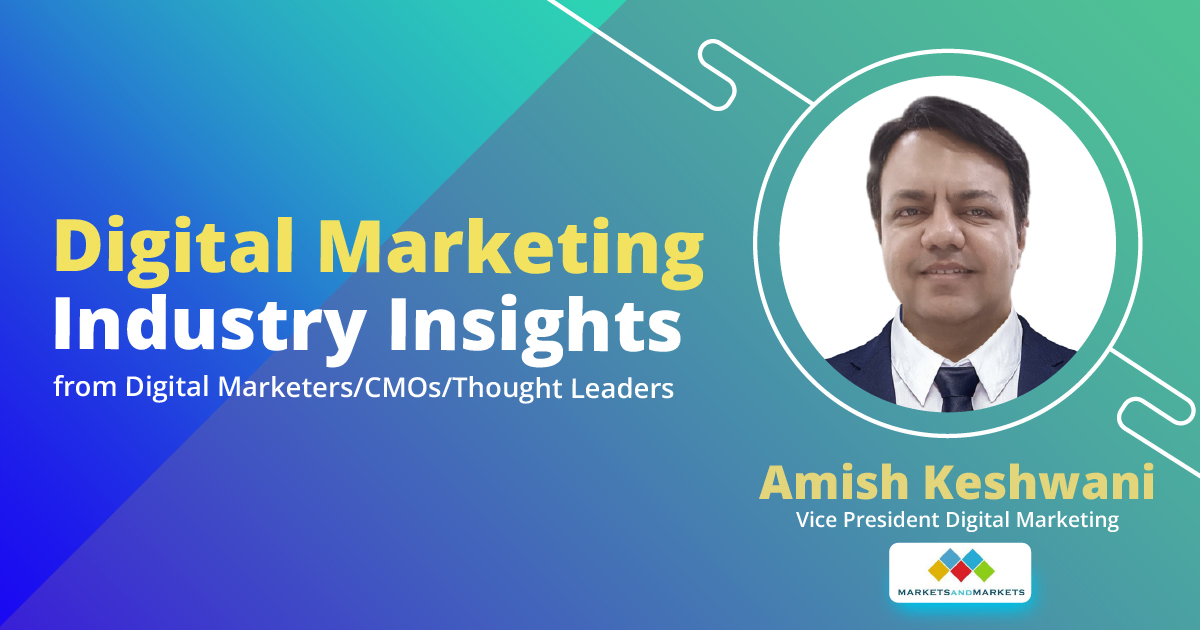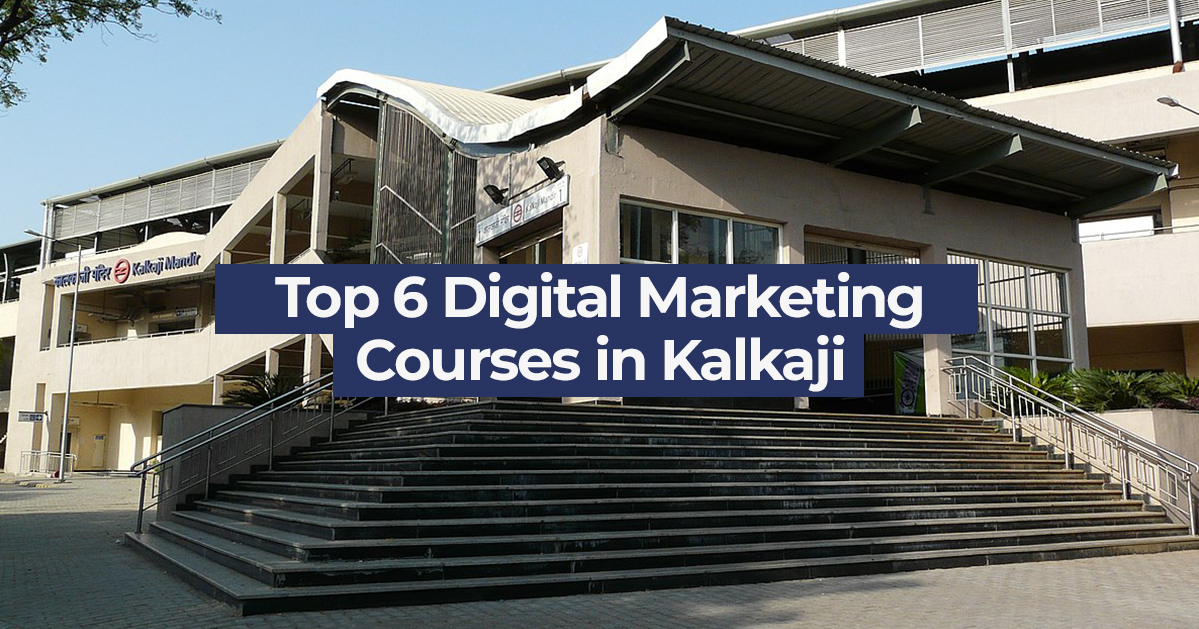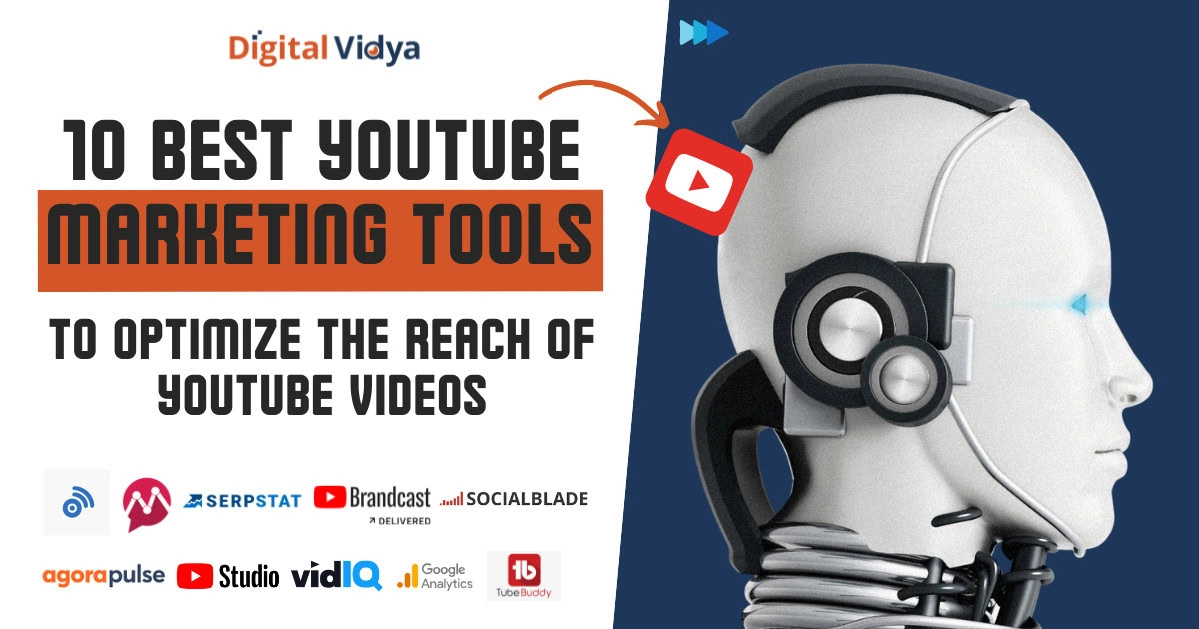Pradeep Chopra (Co-Founder, Digital Vidya): In today’s modern age, everything can be found online. The use of the internet has urged every organization to promote themselves online.
An estimated 85.4% of internet users search for information online at least once per month.
This data is, in fact, a clear indication of why digital marketing is important in today’s world and the rapid growth it has witnessed in the last couple of years.
We’ve been regularly interviewing marketing thought leaders to learn various aspects of digital marketing from their experiences.

Having been in the digital marketing industry for 17+ years, Amish has managed and executed a couple of key agency accounts across industry sectors – 5star, Dairymilk, Bournvita, ICICI Lombard, Sharekhan, DHFL, TUI, Save the Children to name a few.
In order to assist the sales team in 10Xing pipeline growth, he is currently serving as a digital marketing strategist and managing the performance marketing team at MarketsandMarkets.
In the process he has delivered a 350% increase in inbound SQL (Sales Qualified Lead) growth, earning three promotions and best performer awards.
When was the 1st time you experienced the power of Digital Marketing? What interested you in building a career in Digital Marketing?
Amish: Those were the early days of the Internet. We used to access the internet using those dial-up internet connections by Satyam and other ISPs, with a maximum internet speed of 256 KBPS. I wanted to do something around the internet, but I was confused like every other teenager.
The next five years rolled up fast, and I did my master’s in computers and was still wondering what I should do with it. I kept experimenting in different areas during my internship and landed my first job as a programmer, but I was not happy just creating websites.
Fortunately, one of the prominent internet marketing companies at that time was looking for someone to fill the urgent position. I read a few blogs, did some research & cracked the interview successfully. And that’s how I entered the world of SEO – my first step into digital marketing.
Yes, I am an accidental digital marketer! And that first step has opened a whole new world of opportunities and learnings for me. I succeeded early in my first project, and then there was no looking back. I can see the impact on the bottom line of my employer’s clients.
It was thrilling to see that their revenues were directly impacted by the efforts I have put in – what more satisfaction could I ask for?
Over the next decade, I was on a mission to help as many businesses as possible using my digital marketing skillset. But what interested me more is the ever-evolving nature of the industry.
Every day there is something new to learn, and you can practically implement that new learning and evaluate how effectively it is impacting the revenue/bottom line of the client. That’s fascinating to me. After 17 years in the same field,
I am still thrilled with all google algorithm updates, new dimensions of marketing like metaverse, and the evolution of paid media.
How would you define Performance Marketing for a newcomer? Why has it grown so well over the last few years?
Amish: Performance marketing, in simplest terms, is to drive the return on investment (ROI) for each $ spent on marketing. Whether your client is a start-up or enterprise, in the end, everyone needs to generate revenue, and that’s why they called it business.
Performance marketing is instant gratification when it comes to digital marketing. It is ROI-driven, unlike other segments of digital marketing. The very nature of ROI-driven marketing, where clients can see their $ helping generate more $$, is making this branch grow faster than any other.
Start-ups and small businesses are crucial to the growth of the overall demand for performance marketing as an industry.
Why do you think most marketers bet heavily on “performance marketing” as part of their digital marketing strategy? Do you think that the resource allocation including budget distribution between Performance Marketing and SEO/Organic is justified?
Amish: Performance marketing is the bread and butter when it comes to digital marketing. It helps to justify the marketing cost and showcase the ROI on marketing spending. As a result, most marketers rely heavily on performance marketing to define quantifiable KPIs and showcase the results.
Most answers in SEO start with “it depends,” and when it comes to budget distribution and resource allocation, my answer also begins with “it depends.” SEO takes time to showcase the results, and its KPIs are different.
While SEO has its advantages of organic and qualified traffic, it comes with a heavy resource cost, which takes time to deliver the results. So, if your client is a start-up and non-funded company on a tight budget, then you, as a marketer, are expected to deliver the results from Day 1, and that’s where performance marketing comes to the rescue.
Performance marketing is mostly driven by paid marketing campaigns, so it is easy to track, analyze and get quick results as compared to SEO or any other marketing channel for that matter.
But if your client is looking for more long-term results and has a well-established referral business, then SEO and other marketing channels can play a crucial role there. So, In my opinion, it depends on your client’s business GOAL.
Google Ads and Meta Advertising are the biggest avenues for Performance Marketing today. What are the key differences between them? How can a company decide whether to run Google Ads or do Meta Adv or do both or none of them?
Amish: Google ads primarily work on intent-based (we usually refer to it as the PULL marketing approach). The user knows what he is looking for, and as a marketer, you use google ads to present on top of the page. So, the overall traffic and leads/transactions are more qualified from google ads.
It is more helpful when your client’s business offerings are well-established in the market. Some examples are CRM software, Apple iPhone 14, yoga mats, iPhone app development companies, etc.
People know what they are looking for, so they turn to google to look for the best solution, and google ads give you that opportunity to be there on top of the page to be visible on those specific keywords. It’s a win-win for all.
Meta advertisement works on interest-based (we usually refer to it as the PUSH marketing approach). The user is not actively looking for the product or services but is interested in similar products/services. Meta allows you to be present when the user is browsing similar content on social media.
Some examples are Gift products, Travel related packages, Training courses, etc. It helps to push the user into the funnel based on the specific interest.
Products people buy as “impulse buying” can be a good fit here, but in other cases, the user journey is a little extended here and mostly fall on TOFU (top of the funnel). So, based on which product you are offering and what kind of user you want to target can help you decide on the platform.
How can a company measure the success of its Performance Marketing efforts? What are the top KPIs (Key Performance Indicators) for the same?
Amish: When ROI is positive, it’s safe to say that the performance marketing campaign is working. KPIs depend on business goals and what the business is trying to achieve as a bottom line, whether it’s more visibility/ traffic or more leads/transactions.
A few KPIs which I personally measure are CPC (Cost/click), CPL (Cost/lead), CPA (Cost/Acquisition), Conversion rate, CAC (Customer acquisition cost), and last but not least, ROI %.
According to you, what are the top 3 mistakes committed by organizations today in leveraging Performance Marketing?
The number one mistake most businesses make is starting the campaign without defining the right audience persona.
For example, Mid management employee is more interested in practical, low-budget, flexi-time courses, whereas senior management employee will be more interested in strategic, flexi-time, leading faculty-driven courses. Offering a common course to both will end up in 50% waste of marketing costs.
The second biggest mistake businesses/marketers often make is underestimating the power of testing. Most of the time, when the campaign is performing well and meeting the targets, businesses ignore the testing aspects—for example, creating a separate campaign for mobile users, changing CTA based on persona or geography, or serving content in geo-specific languages. These changes can significantly improve the output while keeping the budget intact.
The third critical thing is to set clear KPIs based on the big picture so that campaign does not chase only numbers. Instead, it should be focused on the big picture (which is revenue in most cases).
Knowing what maximum cost/lead a business can afford is essential to get a positive ROI. How much time will it take to convert the lead? And what will be the estimated “lead to conversion ratio”? Setting up the right KPI is the crucial step in defining the budget and will help marketers know where the RED line is.
What do you recommend between outsourcing Performance Marketing to an Agency or doing it in-house? Why?
Amish: I recommend outsourcing it to an agency if it’s a start-up or small business. If it’s a mid-market or enterprise-level business, then it’s good to have an in-house team.
The in-house team is a long-term investment, so it makes sense for large enterprises to invest in, whereas start-ups need immediate results and often live campaign by campaign so they need the contractual team to work with them.
What do you think is the role of technology in marketing in today’s world? Would you like to share any good examples in which technology is efficiently leveraged for the success of Performance Marketing?
Amish: Martech has reformed the way marketing works in today’s era. A lot of repeated manual intervention, which is not productive, is now taken care of by Martech tools.
It makes the life of marketers easy and simultaneously brings precision to the work as it is automated and executed by a machine.
An excellent example is HubSpot, a complete marketing automation tool that helps the marketing team automate repeated tasks like email scheduling and nurturing programs and also brings intelligence to segment the data based on user interaction on the website and emails.
It helps both marketing and sales teams be on the same page and share a common platform to manage the leads effectively.
Which are your favorite Performance Marketing Tools?
Amish: Some of my favorites are HubSpot, Google Optimize, and Impact.
How do you stay updated on the latest trends in Performance Marketing? Which are the Performance Marketing resources (i.e. blogs/websites/apps) you visit regularly?
Amish: I believe there are three ways you can stay updated in any industry – Reading, Networking, and Experimenting. These are the three powerful ways to learn and grow in performance marketing.
As far as reading resources are concerned, I usually prefer newsletter updates as they are easy and delivered in crunchy bites. I have subscribed to many industry newsletters like MarketingLand, MarketingProfs, HubSpot, Search Engine Land, DemandCurve, PPCHero, SEOFOMO, etc.
How do you see Performance Marketing evolve in the future? What are the top trends you foresee for 23?
Amish: Covid has forced many businesses to go online who were otherwise happy doing business offline too. At the same time, the overall digital marketplace is also growing, so there is a huge demand for performance marketing to drive revenue from the digital channel.
It will increase in the coming years, considering the start-up era. Many brands have also started now pushing their online store, which otherwise focused on traditional offline business.
Technology has now made it possible to link the impact of online clicks to store footfall and purchases, pushing more brands and startup owners to leverage their digital footprints. Four trends that I believe will shape the performance marketing in 2023 will be,
A. Storytelling will take center stage in 2023. We all have stories, and as humans, we love to listen to stories, whether it’s a podcast or a Netflix series. Marketing will be heavily focused on storytelling in 2023.
B. Conversational marketing will be more advanced and automated to remove the friction of the user journey on the website. Hyper-personalization will be a game changer.
C. Google is moving towards more visuals in 2023. I expect more growth in visual-based properties like the Google Discovery campaign.
D. The role of performance marketers will drastically change when it comes to managing AdWords campaigns. It will be more on the strategic side than day-to-day operations. Google ads will be more automated, and marketers will be working more towards defining rules and designing the strategy.
If you were given the power to make one change in the Digital Marketing industry today, what would you do?
Amish: I believe, Educating clients/business owners is very much essential to bring transparency to the ecosystem. If given a chance, I will start business support communities where all businesses can get their fundamental question answered, get educated, and see some examples in action.
Do you recommend that freshers should consider “Performance Marketing” for building their career? What is your advice for newbies, who are looking at entering the Digital Marketing industry?
Amish: I would highly recommend “Performance Marketing” as a career, as it addresses both – job satisfaction and monetary satisfaction. What more can one ask for?
Most businesses are built around solving a problem, and as performance marketers, we are solving their most significant issue, i.e., driving revenue from digital channels. I think this will be in demand for at least the next ten years.
Advice for newbies -> Read, Network and Experiment as much as possible. Reading will give you ideas. Networking will open up many stories you could learn from – both success and failure. Experiments will help you to validate your learnings.
Be open to learning, but only believe when it works for you. Learning, unlearning, and re-learning is the way to climb up in your career.
What are the top skills you look for when hiring a candidate for an entry-level role in Performance Marketing?
Amish: I look at three primary skills:
- Communication
- Learning Attitude
- Basic knowledge of paid marketing channels
Would you like to share a few words about the Digital Marketing education we are imparting at Digital Vidya?
Amish: I had an opportunity to participate as a panelist in a recent webinar organized by Digital Vidya. From my experience, I can say that the faculty they have are some of the most experienced and prominent in the digital marketing industry.
Besides this, their way of imparting education is efficient. I have heard many stories of practical implementation of the tool and best practices which resulted in massive success in that one-hour webinar, so I can imagine the helpful tips they are offering in their other long-term programs.
Overall, they follow a very structured approach to ensure that participants gain clarity from basic concepts and walk away with advanced-level expertise by the end of the program. Overall, I am highly impressed by Digital Vidya.
Anything else you would like to share with our readers?
Amish: One thing I learned hard after spending almost 20 years in the field is that we are here to help others. As a marketer, you help businesses to grow and reach the right audience. If you are a business, you assist customers by solving their problems.
If you are a customer, you are helping companies to expand so that they can help more such people like you. It’s an interconnected ecosystem, but the moment we dilute from our core purpose – service to others – we start seeing the ripple effect in all possible ways, damaging the entire ecosystem.
So, let’s be true to our core purpose – “Let’s help each other & be grateful for life.”
Pradeep (to Amish): Thank you Amish for providing such insightful details about your digital marketing journey as well as the future trends of digital marketing.
Pradeep (to our readers): I hope you find the insights shared by Amish valuable. In case you have any questions for him or me, please post them in the comments section.
Would you like to have 10x Growth in your Career or Business by leveraging digital marketing? Join our upcoming live online Digital Marketing Foundation Masterclass worth Rs 1999 FREE.








